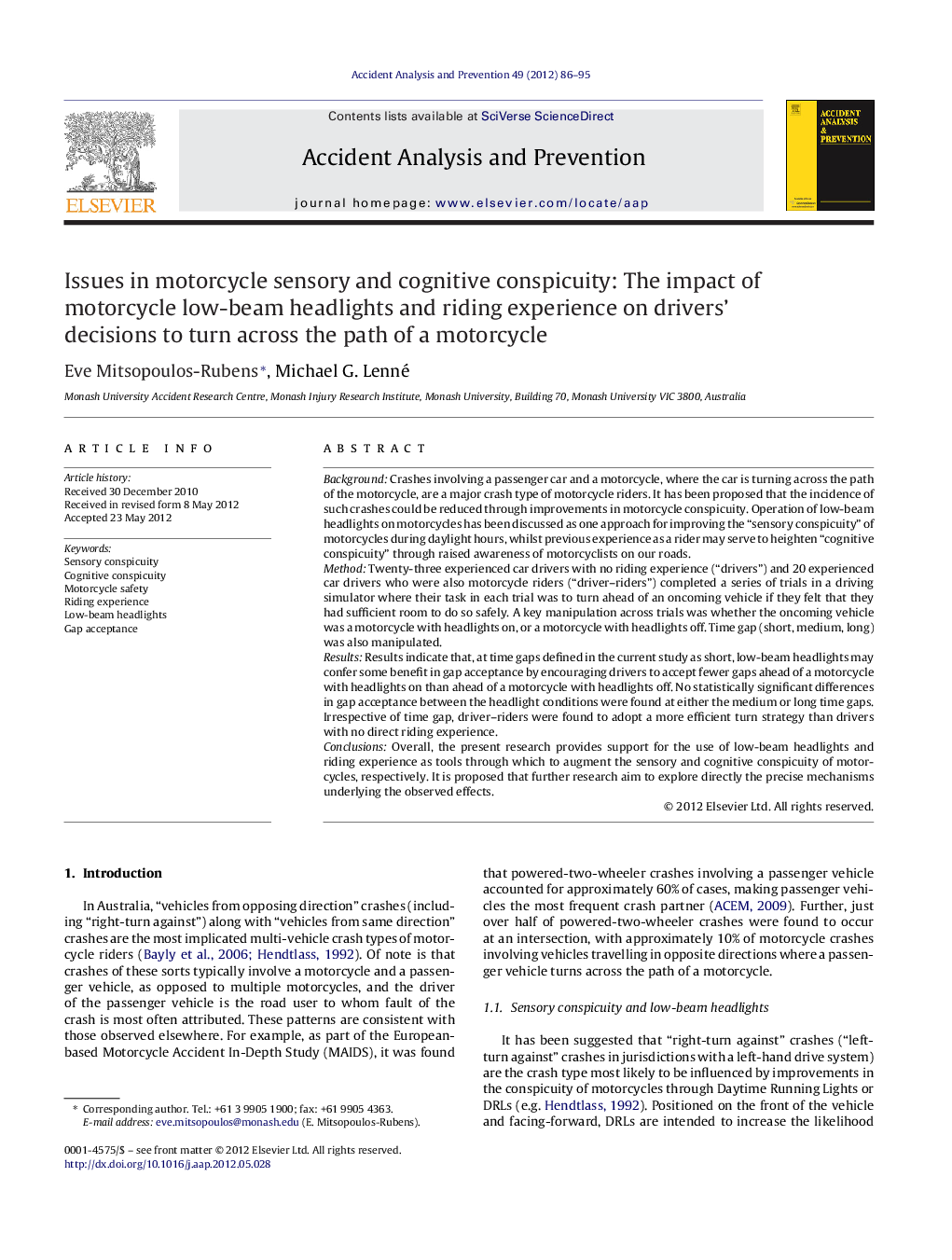| کد مقاله | کد نشریه | سال انتشار | مقاله انگلیسی | نسخه تمام متن |
|---|---|---|---|---|
| 572637 | 1452948 | 2012 | 10 صفحه PDF | دانلود رایگان |

BackgroundCrashes involving a passenger car and a motorcycle, where the car is turning across the path of the motorcycle, are a major crash type of motorcycle riders. It has been proposed that the incidence of such crashes could be reduced through improvements in motorcycle conspicuity. Operation of low-beam headlights on motorcycles has been discussed as one approach for improving the “sensory conspicuity” of motorcycles during daylight hours, whilst previous experience as a rider may serve to heighten “cognitive conspicuity” through raised awareness of motorcyclists on our roads.MethodTwenty-three experienced car drivers with no riding experience (“drivers”) and 20 experienced car drivers who were also motorcycle riders (“driver–riders”) completed a series of trials in a driving simulator where their task in each trial was to turn ahead of an oncoming vehicle if they felt that they had sufficient room to do so safely. A key manipulation across trials was whether the oncoming vehicle was a motorcycle with headlights on, or a motorcycle with headlights off. Time gap (short, medium, long) was also manipulated.ResultsResults indicate that, at time gaps defined in the current study as short, low-beam headlights may confer some benefit in gap acceptance by encouraging drivers to accept fewer gaps ahead of a motorcycle with headlights on than ahead of a motorcycle with headlights off. No statistically significant differences in gap acceptance between the headlight conditions were found at either the medium or long time gaps. Irrespective of time gap, driver–riders were found to adopt a more efficient turn strategy than drivers with no direct riding experience.ConclusionsOverall, the present research provides support for the use of low-beam headlights and riding experience as tools through which to augment the sensory and cognitive conspicuity of motorcycles, respectively. It is proposed that further research aim to explore directly the precise mechanisms underlying the observed effects.
► “Drivers” and “driver–riders” completed a series of driving simulator trials.
► Task was to turn ahead of an oncoming vehicle if they felt that they could safely.
► In general, the oncoming vehicle was either a motorcycle with low-beam headlights on or off.
► “Driver–riders” adopted a more efficient turn strategy than “drivers”.
► At short gaps, participants turned less ahead of a motorcycle with lights on than one with lights off.
Journal: Accident Analysis & Prevention - Volume 49, November 2012, Pages 86–95